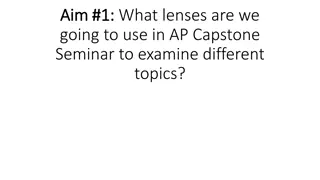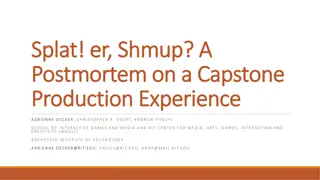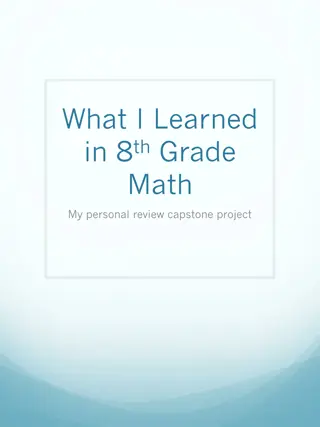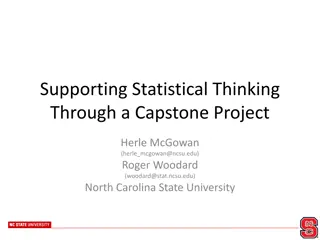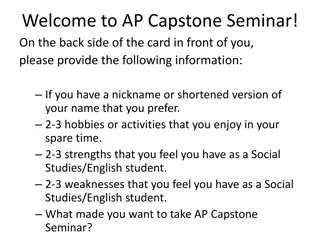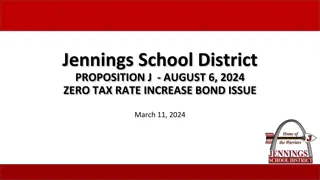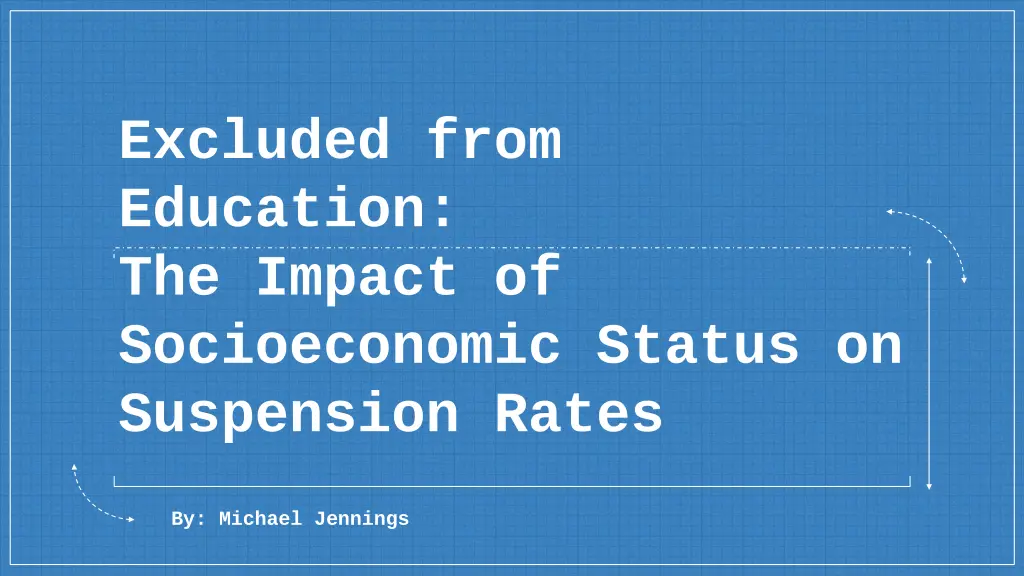
Impact of Socioeconomic Status on High School Suspension Rates
Explore how socioeconomic status affects high school students' likelihood of suspension, uncovering factors like teacher bias and prior disciplinary history. Discover the link between lower SES, more suspensions, and potential future academic challenges for students.
Download Presentation

Please find below an Image/Link to download the presentation.
The content on the website is provided AS IS for your information and personal use only. It may not be sold, licensed, or shared on other websites without obtaining consent from the author. If you encounter any issues during the download, it is possible that the publisher has removed the file from their server.
You are allowed to download the files provided on this website for personal or commercial use, subject to the condition that they are used lawfully. All files are the property of their respective owners.
The content on the website is provided AS IS for your information and personal use only. It may not be sold, licensed, or shared on other websites without obtaining consent from the author.
E N D
Presentation Transcript
Excluded from Education: The Impact of Socioeconomic Status on Suspension Rates By: Michael Jennings
Research Question What impact does socioeconomic status have on suspension rates for high school students? 2
Thesis Statement High school students belonging to families or communities of lower socioeconomic statuses than their peers have a higher rate of being suspended due to the environment in which they grew up, teacher biases and expectations, and their history of being suspended. 3
Key Terminology Exclusionary Discipline: Methods of punishment that remove a student from the classroom, including suspensions and expulsions Zero-Tolerance Policies: Disciplinary policies in schools that encourage more severe punishment for minor misbehaviors 4
Introduction Students of lower socioeconomic status are more likely to be suspended Exclusionary discipline, including suspensions and expulsions have been rising in schools Suspensions can cause future academic and personal issues in students 5
Key Findings The childhood environments of lower SES students and their records of suspensions before high school impact their future suspension rates Negative teacher bias against students of lower SES is linked to an increase in suspension rates Race and gender were two other very significant factors in predicting suspension rates 6
History of Suspensions Students of lower SES are more likely to be suspended in general, but in that, they are less likely to be suspended for violent infractions Students suspended in middle school are more likely to be suspended again in high school 7
Teacher Bias Staff in schools aren t always sure how to interpret zero-tolerance policies Teachers take into consideration the student s record of suspensions and the identifying characteristics of the students 8
Exclusionary discipline is most commonly used for more interactive day-to-day disruptions, especially defiance and noncompliance 9
Race & Gender Male students are more likely to act out than female students There are no clear differences in behaviors between different races 11
Solutions Programs focusing on: decreasing violence increasing positive relationships between teachers and students Increasing perceived support by students Restorative practice programs 13
Thanks! 14
https://www.google.com/url?sa=i&url=https%3A%2F%2Fwww.urban.org%2Furban-wire%2Fafrican-american-girls-and-https://www.google.com/url?sa=i&url=https%3A%2F%2Fwww.urban.org%2Furban-wire%2Fafrican-american-girls-and- school-prison-pipeline-who-are-our-sisters- keepers&psig=AOvVaw3EcDuBbHDQ2SL_PO9NTOoh&ust=1627058622694000&source=images&cd=vfe&ved=0CAwQjhxqGAoTCNjx2 euP9_ECFQAAAAAdAAAAABCNAQ https://educationresearchalliancenola.org/files/publications/111417-Barrett-McEachin-Mills-Valant-What- Are-the-Sources-of-School-Discipline-Disparities-by-Student-Race-and-Family-Income.pdf 15


